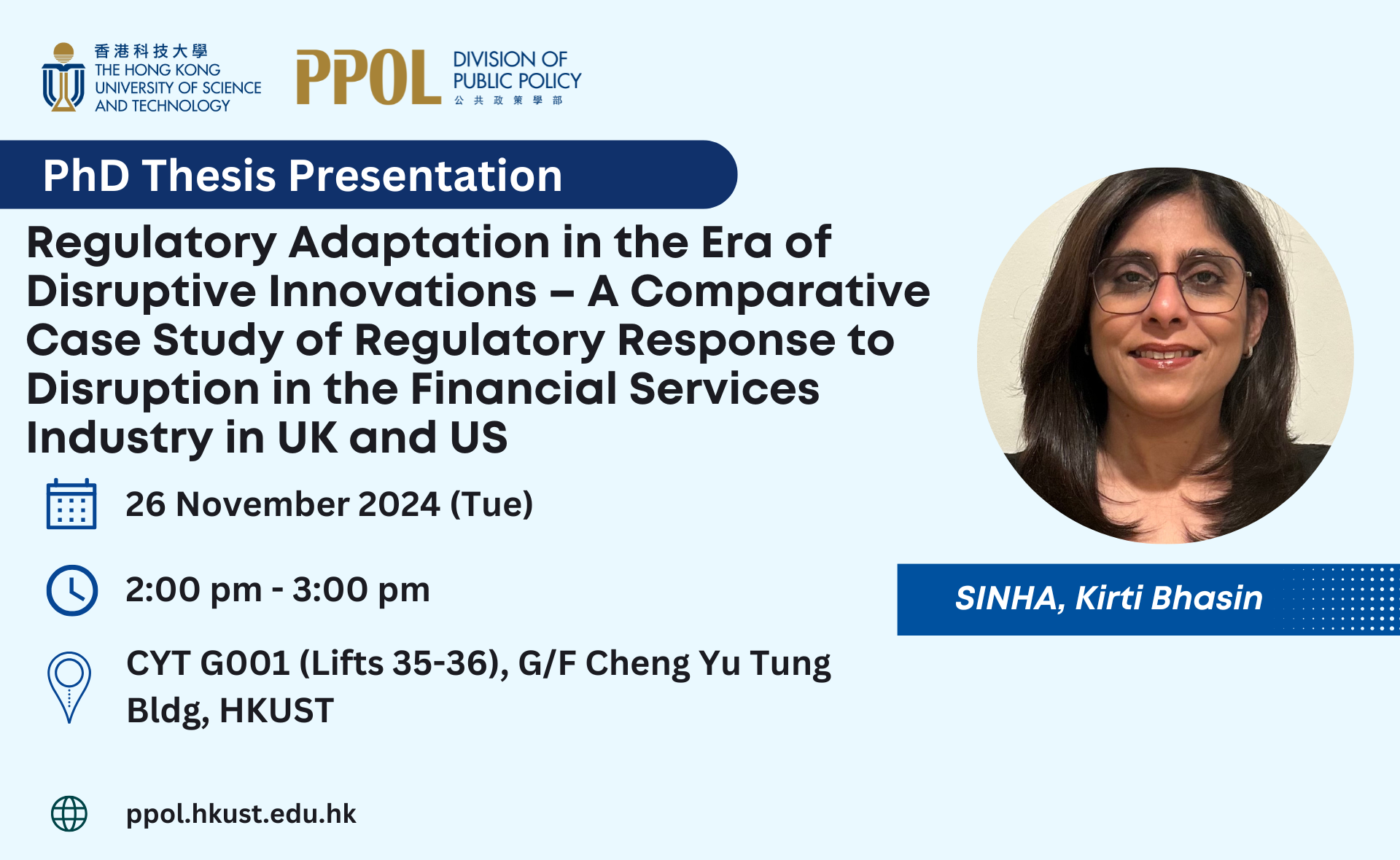
ABSTRACT
Over the past decade, the financial services industry has undergone serious disruption on
account of new age technologies, witnessing steep rise in unconventional applications arising
from internet usage and artificial intelligence (such as mobile payments and digital banking,
big-data solutions, block-chain and digital currency). Regulation, it is maintained always trails
behind innovation which then begs the question, do such market developments shock the
regulatory system, widen the gap between the innovator and regulator and the capacity
shortfalls impair governance?
This study employs an inter-disciplinary perspective, engaging regulatory policy, innovation
policy and public management viewpoints to explore How have existing regulatory institutions
responded to the sudden onset of acute and widespread market led disruption on account of novel
innovations in the financial services industry? Methodologically, the study is a qualitative one
and employs investigative and interpretive techniques embedded in the tenets of Grounded
Theory, using both secondary data (regulators websites, working papers, expert reports, as
well as free flowing, conversational data in the form of podcast interviews and speeches by
regulators) in combination with in-depth direct interviews of regulators and other experts to
compare and contrast the regulatory response of two highly advanced regulatory regimes of
UK and US.
The data is systematically coded and analysed in NVivo to determine a typology of challenges
faced by the regulators when encountered with the sudden onset of disruptive technologies.
These challenges are then mapped out using the policy-capacity framework to identify the
capacities which are needed to meet the challenges. The study also reveals various strategies
which regulators employ to tackle capacity shortfalls.
Analytical comparison of the responses of the two regimes under study i.e. the UK and the
US, confirm that when met with large scale, dynamic changes in the market, regulators
embrace change and innovation at full speed and regulatory systems adjust to accommodate
this change. This process of regulatory adaptation involves two sub processes, the more
outward looking function of Governing Innovation and the inward looking one of Innovative
Governance. The former focuses on instituting changes in governing the marketplace by
adapting rules and guidelines or setting out new frameworks where needed. To aid this
process the use of the regulatory sandbox as one of the tools has gained substantial recognition
worldwide. The study also investigates into the role and contribution of the sandbox and
concludes it is a special purpose tool with application only in selective use cases and most
certainly not a compulsive addition for the management of disruptive innovation.
The latter process of innovative governance involves transferring knowledge and
understanding of the technological solutions accumulated in the front end, outward facing
divisions in the agency to the more inward facing, back-end, supervisory and examination
divisions. It also encompasses the pursuit of systematic modernization of supervisory
techniques and targeting a technology enabled regulatory regime by deploying the
underlying technologies which are powering the new age revolution in the marketplace.
Theoretically, the findings of this research confirm that the process of regulatory adaptation
combine both cyclical as well as a linear elements to it. The adaptive process is incremental
and cyclical when involved in the sub-process of governing innovation. It subsequently
assumes a temporal dimension which spreads out as it expands into the realm of innovative
governance. The linearity observed here in the context of new age technologies varies in
composition from the life cycle type orientation proposed previously in literature. Another
significant finding of the research is that each regime demonstrates a bias in favor of
promoting (responsible) innovation vs. regulating (irresponsible) innovation and its
normative stance around this determines how the process of regulatory adaptation unfolds
and the outcomes it delivers.
For policy makers, the findings of the study calls for a willingness to lead with agility and
humility embracing flexibility, adaptability and tenacity to work through multiple iterations,
as well as a culture of constant learning and growth.
Over the past decade, the financial services industry has undergone serious disruption on account of new age technologies, witnessing steep rise in unconventional applications arising from internet usage and artificial intelligence (such as mobile payments and digital banking, big-data solutions, block-chain and digital currency). Regulation, it is maintained always trails behind innovation which then begs the question, do such market developments shock the regulatory system, widen the gap between the innovator and regulator and the capacity shortfalls impair governance?
